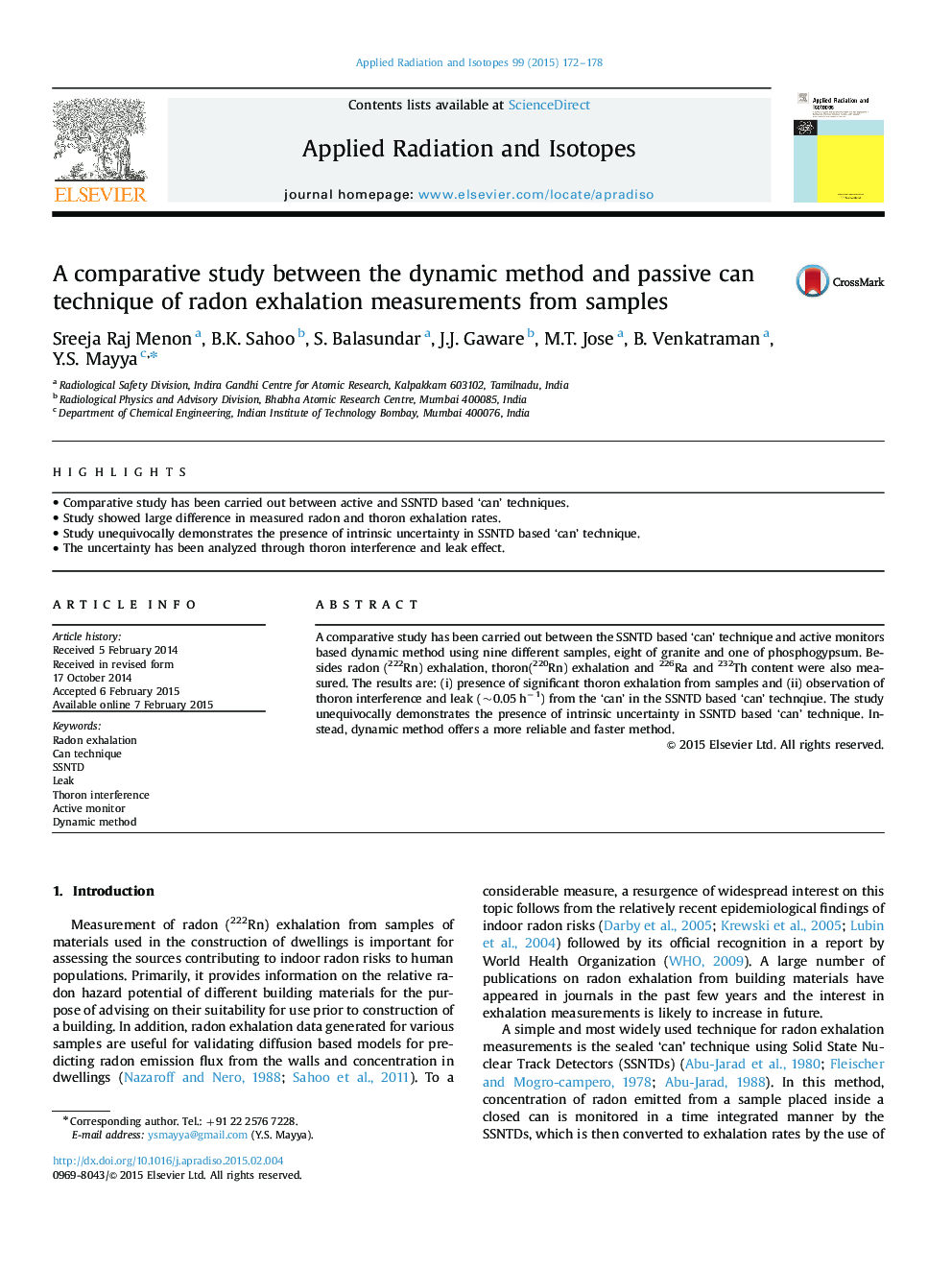| Article ID | Journal | Published Year | Pages | File Type |
|---|---|---|---|---|
| 1875789 | Applied Radiation and Isotopes | 2015 | 7 Pages |
•Comparative study has been carried out between active and SSNTD based ‘can’ techniques.•Study showed large difference in measured radon and thoron exhalation rates.•Study unequivocally demonstrates the presence of intrinsic uncertainty in SSNTD based ‘can’ technique.•The uncertainty has been analyzed through thoron interference and leak effect.
A comparative study has been carried out between the SSNTD based ‘can’ technique and active monitors based dynamic method using nine different samples, eight of granite and one of phosphogypsum. Besides radon (222Rn) exhalation, thoron(220Rn) exhalation and 226Ra and 232Th content were also measured. The results are: (i) presence of significant thoron exhalation from samples and (ii) observation of thoron interference and leak (~0.05 h−1) from the ‘can’ in the SSNTD based ‘can’ technqiue. The study unequivocally demonstrates the presence of intrinsic uncertainty in SSNTD based ‘can’ technique. Instead, dynamic method offers a more reliable and faster method.
